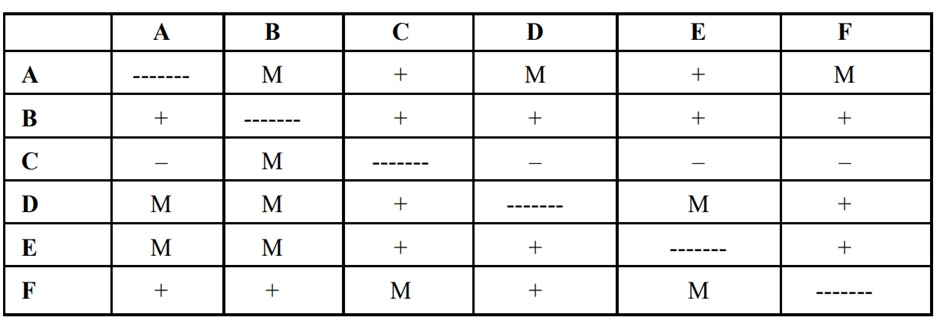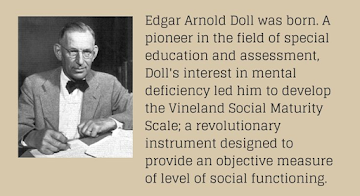Test Name: 16 PF (personality factors). These are functionally independent psychologically meaningful dimensions.
Author: Raymond Bernard Cattell in1949.
Definition
- The
characteristic ways of responding to individuals and situations.
Definition
- Personality
refers to unique and relatively stable qualities that characterize an
individual’s behaviour across different situations over a period of time.
Personality
is characterised by the following features:
1. It has
both physical and psychological components.
2. Its
expression in terms of behaviour is fairly unique in a given individual.
3. Its main
features do not easily change with time.
4. It is
dynamic in the sense that some of its features may change due to internal or
external situational demands. Thus, personality is adaptive to situations
Personality
Factors by Raymond Cattell
He said that humans are innately
driven by ergs, which means goals were created because of hunger, curiosity,
anger, fear, or other basic motivations which are found in both humans and
primates. Ergs example Food Seeking, Mating, Gregariousness, Parental
Protectiveness, Exploration, Safety, Self-Assertion, Pugnacity, Narcissistic
Sex, and Acquisitiveness.
Socially
created goals are called socially shaped ergs (profession, family and home,
spouse, religion) and Cattell gave it the term socially shaped ergic
manifolds (SEM). SEM helps in explaining the contribution of the environment to
human behaviour.
Formula to predict behaviour (Cattel)
R = f (S ,P )
Where, R
refers to the nature of a person’s specific response,
f
refers to the unspecified function,
S
refers to the stimulus situation at a given moment in time and
P
refers to the Personality structure.
This formula signifies that the nature of a
person’ specific response (R), meaning what the person does or thinks or
verbalises, is some unspecified function (f) of the stimulus situation (S) at a
given moment in time and also of the individual’s personality structure (P).
Personality Factors by Raymond Cattell
Personality is the interaction between the
genetic and personality systems and the socio cultural milieu within which the
organism is functioning
ü
There
is a common structure on which people differ from each other.
ü
This
structure could be determined empirically.
ü
He
tried to identify the primary traits from a huge array of descriptive
adjectives found in language using factor analysis, to discover the common
structures.
ü
Found
16 primary or source traits or factors (16 PF).
Ø
Source traits are stable, and are considered as the building blocks of
personality. The source traits are described in terms of opposing tendencies.
Ø
Surface traits that result out of the interaction of source traits.
16 Personality Factors (16 PF)
- Abstractedness: Imaginative versus practical
- Apprehension: Worried versus confident
- Dominance: Forceful versus submissive
- Emotional
stability:
Calm versus high-strung
- Liveliness: Spontaneous versus restrained
- Openness
to change:
Flexible versus attached to the familiar
- Perfectionism: Controlled versus
undisciplined
- Privateness: Discreet versus open
- Reasoning: Abstract versus concrete
- Rule-consciousness: Conforming versus
non-conforming
- Self-reliance: Self-sufficient versus
dependent
- Sensitivity: Tender-hearted versus
tough-minded
- Social
boldness:
Uninhibited versus shy
- Tension: Inpatient versus relaxed
- Vigilance: Suspicious versus trusting
- Warmth: Outgoing versus reserved
Salient
Features
1. Age: 16 years and above
2. Test was culmination of 40
years factor analysis on normal and clinical groups.
3. Forms: 5 (A, B, C, D and E).
Forms A, B, C and D are suitable for individuals whose education level is
roughly equivalent of normal high school students. And Form E is designed
for individuals with marked educational and/or reading deficiency.
4. No. of items A = 187, B = 187,
C = 99, D = 99, E = 128.
5. Time required A and 45 to 60
minutes, C and D 25 to 30 minutes.
6. Three alternative answers,
forced choice for Form A, B, C and D and for E it is two alternative
choices.
7. For maximum precision minimum
two forms should be used on adults. However, due to time constraints one
form also can be used.
8. Most frequently used form is A.
9. Reading level of Form A and B
is 7-8th grade, Form C and D is 6-7th grade and Form
E 3-4th grade.
10. Reliability for Form A and B
Short interval (immediate to 2 weeks) test retest reliability - .80
Long interval (2 months to 8 years) test retest reliability - .78
11. For other forms check manual.
12. Paper pencil Self administering
test.
13. Scoring: Use scoring key. Add
all points and obtain raw score.
14. Convert raw score into Sten
(Standard Ten Mean of Sten score is 5.5 and SD is 2.0) score.
15. Sten scores 4 to 7 normal while
1, 2, 3 and 8, 9, 10 are extreme and occur less in normal population.
16. Indian norms on Form A and B
were given by SD Kappor in 1991.
Uses of 16 PF
Ø Career counseling,
Ø Marital counseling, and
Ø For employee testing and selection
in business
Ø Personality assessment
*********









